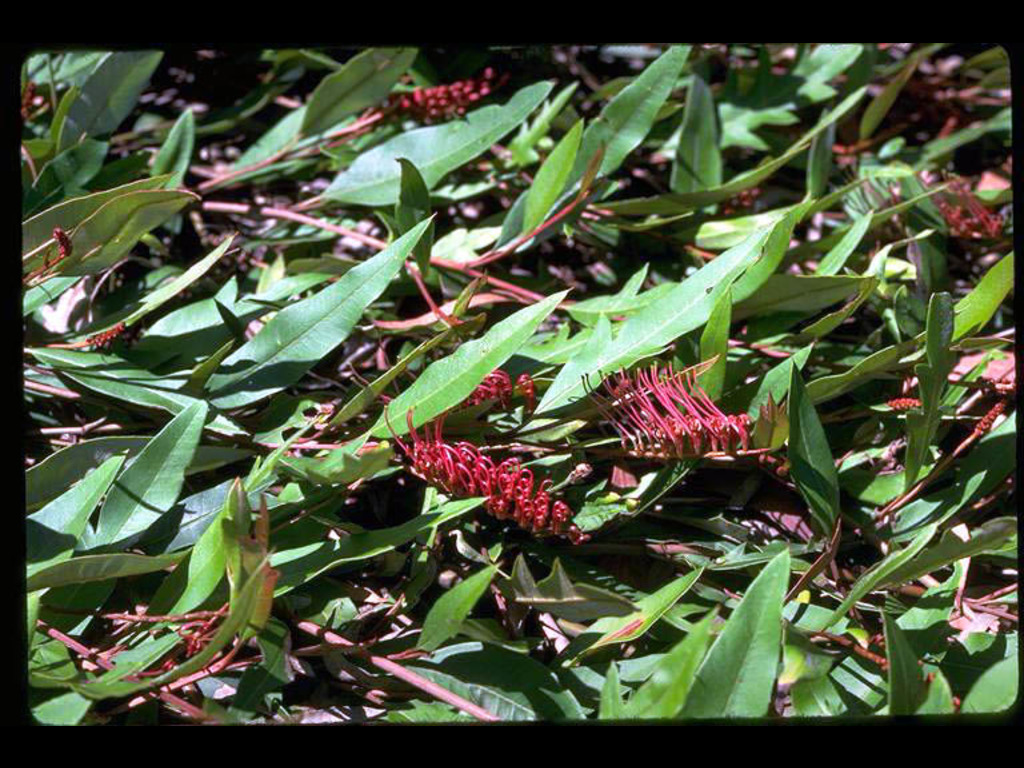Grevillea 'Poorinda Royal Carpet'
- File Number
- 79
- ACRA Field Book Number
- -
- Registration Date
- 30/03/1979
- Application Received
- 21/10/1975
- Family
- Proteaceae
- Cultivar Name
- Grevillea 'Poorinda Royal Carpet'
- Origin
- Grevillea 'Poorinda Royal Carpet' is said to be a hybrid between Grevillea laurifolia and Grevillea willisii. Cultivar received by the Authority 21 October 1975.
- Characteristics
- It is a prostrate plant with long stems spreading up to 6m. The leaves vary from entire to lobed and have pointed tips. The entire leaves are between 60-70mm long by about 20mm wide. The lobed leaves are about 80mm long and about 25mm wide across the lobes. The upper surface is smooth and dark green while the underside is grey with a dense covering of silky hairs. The flowers are of the "toothbrush" type and are borne in the leaf axils. The 10mm long perianths are maroon, while the prominent red styles are 25mm long and have a yellow-green stigma. Diagnosis: This cultivar differs from its stated parents in leaf shape and in comparison with Grevillea willisii, in flower colour. The leaves vary from Grevillea laurifolia in that some are lobed. The entire leaves are similar. The lobed leaves of this cultivar are very much less lobed than those of Grevillea willisii. Grevillea 'Poorinda Royal Carpet' has maroon flowers compared with cream for Grevillea willisii. Flower colour is not significantly different between Grevillea laurifolia and Grevillea 'Poorinda Royal Carpet'.
- Cultivation
- Adaptable to a wide range of soil types and shows a high degree of frost hardiness
- Publication
- Australian Cultivar Registration Authority (1979), Australian Plant Cultivars. Australian Plants 10(80): 165
- Colour Coding
- RHS Colour Chart, 1966 edition.Flowers: Perianth tube and limb: greyed-purple187DStyle: red 53D.
- Propagation
- Cuttings from semi-firm new growth
- Applicant Name
- Mr L Hodge.
- Uses
- Groundcover suitable for mass planting or mixed in a shrubbery, or as a spectacular feature plant, attracts nectar feeding birds.
- Availability
- Unknown - probably no longer in circulation
- ANBG Accession Numbers
- ACC079; CBG068680.
- NSL ID
- -
